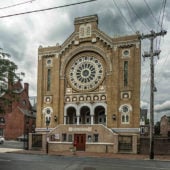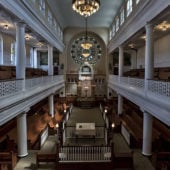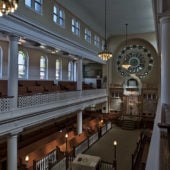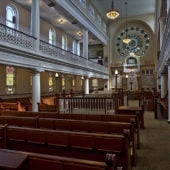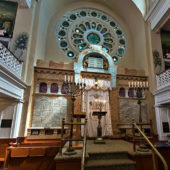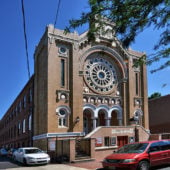The oldest Jewish house of worship in Philadelphia that has been in continuous use.
During the height of Eastern European Jewish immigration to Philadelphia (1880-1920), B’nai Abraham served as a cornerstone of daily Jewish life, feeding the hungry and housing the homeless.
After World War II, as with so many congregations established by immigrants, many of the Jewish families left the neighborhoods surrounding B’nai Abraham to move to suburban areas. During the 1950s, in a futile effort to stem the membership decline, the synagogue board decided to allow mixed (men and women) seating during the High Holidays. Due to population shift, attendance continued to decline and in 2000 it was decided that there was little to lose by returning to the original practice of separate seating. Since then, attendance has slowly, but steadily increased. In recent years there has been an active preschool program which now has over 25 students. Shabbat dinners with speakers are held as well as singles dinners and an adult education program.

